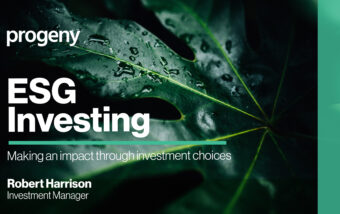
One of the most popular services we offer to prospective clients at Progeny is our Portfolio Review Service. It’s an independent evaluation of the investment strategy and performance of their current portfolio after costs, and an indication of how this compares to the industry as a whole.
It’s a valuable piece of analysis, all with the aim of benefiting the individual investor. Relatively recent legislation has made it compulsory for fund managers to be more transparent over fund and transaction costs, to report regularly to clients and disclose conflicts. This means we can make meaningful comparisons to ensure the service you are receiving delivers value for money.
Going through the review process can also be an insightful exercise. Over time, and having conducted many of these reviews now, a pattern is emerging that portfolios are often not delivering the level of diversification they claim to provide.
Limiting exposure
Diversification is a feature of your portfolio that is particularly important to get right in times when the markets are volatile. Put simply, diversification is a strategy where a variety of investments are held within a portfolio. This can mean diversification across or within asset classes, and geographically, by investing in domestic and international markets. The aim is to limit exposure and smooth out risk.
When we take a deeper dive into prospective client portfolios as part of our Portfolio Review Service, we are consistently seeing instances where funds are all correlated the same way. Starting with popular stocks, it’s common to find a high usage of what are termed FAANG stocks. FAANG is an abbreviation coined by Goldman Sachs for five top-performing tech stocks in the market, namely, Facebook, Amazon, Apple, Netflix, and Google.
As top performers, these stocks tend to be held in high proportions within portfolio structures and can fall within a range of asset classes, for example, in US, UK or Global Equity. The result of this, is that you might have a number of funds which appear on the surface as if they are made up of different asset classes and holdings but when you look into them more deeply you find that they are all made up of the same FAANG stocks. This lack of diversity increases your risk exposure.
Looking beyond asset class buckets
Many investments can be classed in several different asset class buckets, so it can be hard to ensure diversification by just looking at high-level classifications.
For instance, Scottish Mortgage could be classed as a UK holding, Polar Cap tech can be classed as specialist and T Row Price US growth is classed as a US holding. On the face of it, each of these investments exists in three different asset class buckets and therefore you would assume they are all different. However, as they all invest mainly in US tech companies there is strong cross-over between them. So there is little diversification benefit from holding all three as they contain pretty much the same equities.
Looking more closely at Scottish Mortgage, this is an investment trust which is listed on the UK stock market, so it’s quite often classed as a UK stock. However, the fund invests in mainly US companies and in reality has less than 10% in UK stocks, so it’s also sometimes classed as an international equity. This is just one product but a clear example of the confusion this can cause. For example, if a portfolio claims to hold 30% in UK stocks, if it includes Scottish Mortgage, digging below the surface we will find in reality it may hold a lot less.
Fixed interest and alternatives
The fixed interest and alternatives asset classes have traditionally been used defensively to protect the portfolio when the markets are falling. But, again, within these asset classes, there is wide variation. For example, in fixed interest, if you are holding a long-dated government bond it will make money when markets fall, but if you buy an emerging market high yield bond, this is correlated to equity markets and will fall. Both, however, are classed as fixed interest assets which may lead investors to think they will offer portfolio protection in a downturn but that’s not the case. Alternative assets are similar with some being positively correlated to equity and some being diversifiers.
Without getting under the bonnet and taking a detailed look at exactly how your portfolio is structured it is impossible to get a true measure of just how diversified it is, and the degree to which your investments will offer protection and limit your exposure to risk.
If you would like a complete and accurate analysis of your portfolio, including a transparent view of all the fees you’re paying and a comparison with the rest of the industry, our Portfolio Review Service is tailor-made to help. For more information about the service, click here, or please get in touch.










